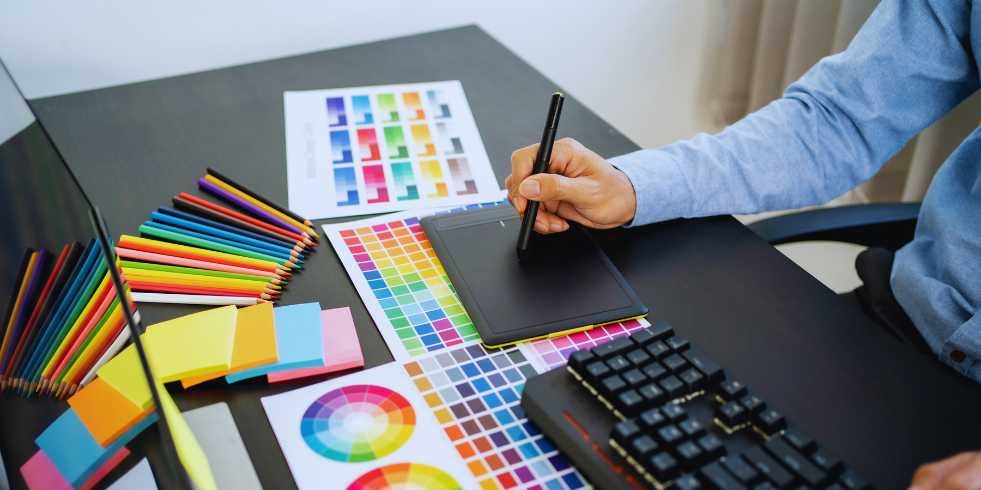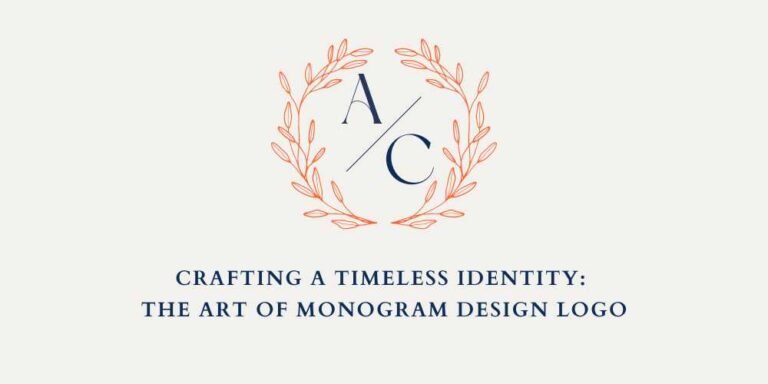Graphic design is often misunderstood, with many misconceptions clouding the true nature of the profession. These myths can lead to undervaluing the work of designers, making it crucial to separate fact from fiction. In this article, we’ll explore and debunk common myths about graphic design, providing you with a clearer understanding of what this creative field is really about.
Myth 1: Graphic Design Is Just About Making Things Look Pretty
One of the most pervasive myths is that graphic design is purely about aesthetics—just making things look attractive. While aesthetics play an important role, graphic design is fundamentally about communication. Designers use visual elements like typography, color, and layout to convey messages and evoke emotions, creating a visual language that can speak louder than words.
Graphic design is an essential tool in branding, advertising, and information dissemination. A well-designed logo, for example, can convey a brand’s identity and values in a single glance. Beyond aesthetics, the success of a design is often measured by its effectiveness in achieving specific goals, such as increasing brand awareness or driving conversions.
The truth is, graphic design is as much about problem-solving as it is about visual appeal. Designers must understand the needs of their audience and the objectives of their clients to create work that is not only beautiful but also functional and impactful. This requires a deep understanding of both design principles and human psychology .
Myth 2: Anyone with Design Software Can Be a Graphic Designer
Another common misconception is that anyone with access to design software can be a graphic designer. While tools like Adobe Photoshop and Illustrator are powerful, they are just that—tools. They are no more a substitute for a designer’s skill and creativity than a hammer is for a carpenter’s craftsmanship.
Graphic design requires a unique blend of technical skill, creativity, and knowledge of design principles. Professional designers spend years honing their craft, learning how to effectively use space, color, typography, and imagery to communicate messages. They understand how to create balance and harmony in their designs and how to use contrast and hierarchy to guide the viewer’s eye.
Moreover, designers must stay updated with industry trends, software updates, and evolving design standards. What separates a professional designer from a hobbyist is not just their proficiency with tools but their ability to think critically and solve problems creatively. It’s this combination of skills that enables them to create designs that not only look good but also work effectively across various platforms .
Myth 3: Graphic Designers Only Work with Logos and Brochures
A common stereotype is that graphic designers only create logos, brochures, or business cards. While these are important elements of graphic design, the field encompasses much more. Designers work on a wide range of projects, from web and mobile app design to environmental graphics and product packaging.
For instance, web designers create the visual layouts and user interfaces for websites, ensuring a seamless and engaging user experience. Environmental graphic designers, on the other hand, might design the signage and wayfinding systems for public spaces, integrating architecture and graphic design to enhance how people navigate physical environments. Even in the digital age, print design remains vital, with designers creating everything from magazines to packaging that catches the consumer’s eye on store shelves.
The diversity of graphic design projects reflects the versatility of the profession. Designers are problem solvers who can apply their skills to a wide array of challenges, tailoring their work to the specific needs of each project. Whether working on a corporate branding project or designing an interactive exhibit, graphic designers bring their expertise to a broad spectrum of industries .
Myth 4: Graphic Design Doesn’t Require a Strategy
Some believe that graphic design is purely an artistic endeavor without any need for strategy. This couldn’t be further from the truth. Effective graphic design is deeply rooted in strategy, aligning with the goals of a business or campaign. Before starting a project, designers often conduct extensive research to understand the target audience, the competition, and the brand’s positioning.
A strategic approach to graphic design ensures that every element in the design serves a purpose. Whether it’s choosing a specific color palette to evoke certain emotions or designing a layout that guides users to take a particular action, every decision is made with the end goal in mind. This strategic planning allows designers to create work that not only looks good but also drives results, whether it’s increasing sales, improving user engagement, or enhancing brand recognition.
Moreover, designers frequently collaborate with marketers, product managers, and other stakeholders to ensure that the design aligns with broader business objectives. This integration of design and strategy is what makes graphic design a powerful tool for businesses looking to differentiate themselves in a crowded marketplace .
Myth 5: Graphic Design Is Not Worth the Investment
The myth that graphic design is not worth the investment is one that can have serious consequences for businesses. Many companies, particularly smaller ones, may see design as an unnecessary expense and opt for cheaper, less professional options. However, cutting corners on design can be detrimental in the long run.
Investing in quality graphic design can provide significant returns. A well-designed logo, for example, can become a company’s most valuable asset, instantly recognizable and associated with trust and quality. Good design can also enhance a product’s usability, making it more appealing to customers and easier to use, which can lead to increased sales and customer satisfaction.
Furthermore, consistent and professional design across all marketing materials—whether online or offline—helps build brand recognition and trust. Companies that invest in design are more likely to stand out in the market, create a strong brand identity, and connect more effectively with their target audience. The value of good design lies in its ability to communicate clearly, differentiate a brand, and ultimately contribute to business success .
FAQs
What is the most common misconception about graphic design?
- Many believe that graphic design is purely about aesthetics, overlooking its strategic importance in communication and user experience.
Do graphic designers only work with digital media?
- No, graphic designers work across various media, including print, digital, environmental, and product design.
Is graphic design just about following trends?
- While designers stay updated on trends, true graphic design focuses on timeless principles and the specific needs of the client.
Can a graphic design project succeed without client input?
- Collaboration between the designer and client is crucial for a successful project. Clear communication ensures the design meets the client’s goals and vision.
How does graphic design differ from art?
- Graphic design is a problem-solving discipline with a specific purpose, often tied to business goals, while art is more about self-expression without the need for functionality.
Is it true that graphic design is not a viable career?
- This is a myth; graphic design is a thriving field with opportunities in various industries, especially with the growing demand for digital content.
Do graphic designers need to know how to draw?
- While drawing skills can be helpful, they are not mandatory. Graphic design relies more on understanding design principles, creativity, and proficiency in design software.
Can graphic design be automated?
- While tools and templates exist, they cannot replace the creativity, strategy, and human touch that professional graphic designers bring to a project.
Conclusion
In this article, we’ve debunked some of the most common myths about graphic design, shedding light on the true nature of this dynamic field. From the strategic role of design in business to the diverse range of projects designers work on, it’s clear that graphic design is much more than just making things look pretty. It’s a complex, creative, and strategic discipline that plays a critical role in communication and branding.
Understanding these truths can help both businesses and individuals appreciate the value of graphic design and make informed decisions when investing in design services. Whether you’re a business owner, a marketing professional, or simply someone interested in design, recognizing the importance of quality graphic design can be a game-changer.
Share this post:






